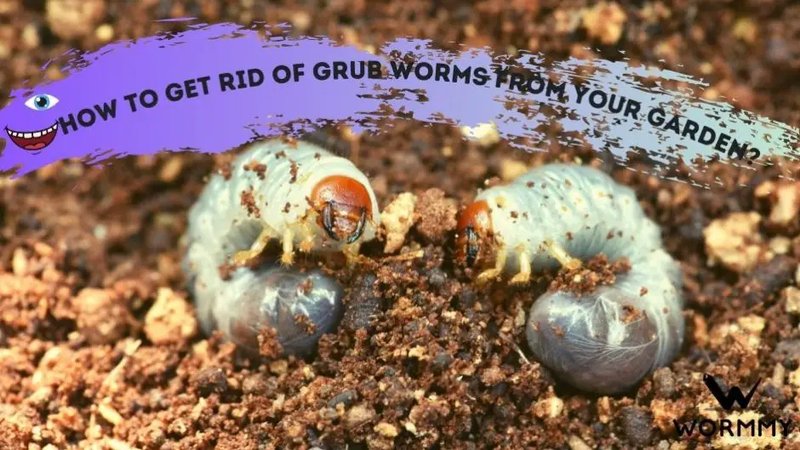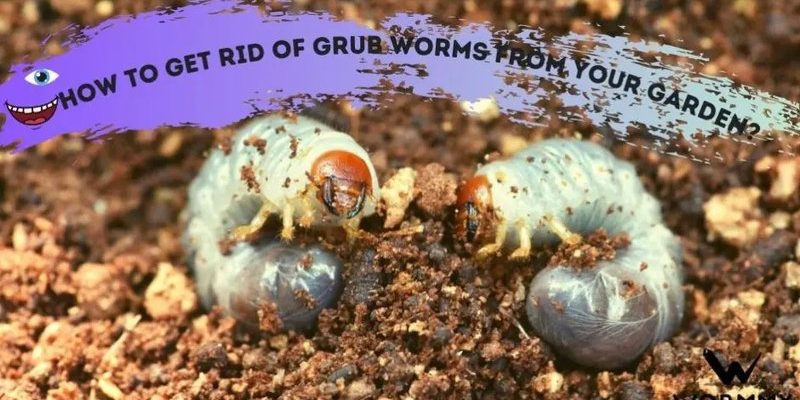
Grub worms, often the larval stage of beetles, can wreak havoc if left unchecked. They thrive in moist soil and can quickly turn your thriving garden into a sad patch of wilting plants. Don’t worry, though; I’ve got you covered. Whether you’re a green thumb or just starting your gardening journey, let’s dive into how to handle these uninvited guests.
What Are Grub Worms?
To better tackle the problem, it’s important to know what you’re dealing with. Grub worms, typically white or cream-colored, are the larval form of various beetles, such as Japanese beetles or June bugs. They live underground and feed on **roots and organic matter**, which can seriously stunt or kill your plants.
You might not see these pests right away since they hide out of sight, munching away on your garden’s roots. If your plants suddenly look droopy or unhealthy, grub worms could be the culprits. They often thrive in raised beds, especially if the soil is rich and well-drained.
Visualizing how they move can help understand the damage they cause. Imagine a group of tiny football players stealthily pushing their way toward the end zone—except, in this case, the end zone is your favorite tomato plants.
Why Are They in Your Raised Garden Beds?
So, why are these pesky bugs choosing your raised beds as their buffet? Grub worms love moist and nutrient-rich environments, and raised beds are often the perfect setting. The dark, rich soil in these beds helps retain moisture better than traditional garden plots, making them attractive to these voracious feeders.
Additionally, raised beds are often more sheltered and warmer than regular soil, providing a cozy environment for grubs to thrive. If you’ve recently used compost or organic matter in your garden, that can add to the allure. Think of it as creating a gourmet feast for them!
Understanding why they’re in your garden can also guide how to keep them at bay. If you can tweak your environment a bit, you may just reduce the risk of these pests moving in.
Signs of Grub Worm Infestation
Recognizing the signs of grub worms is key to addressing the problem early. Here are some common indicators you should look out for:
- Wilting Plants: If your plants suddenly look sad and droopy, especially during watering season, check the roots.
- Dead Patches: Small areas in your garden where grass or other plants die off can signal a grub worm problem.
- Visible Grubs: If you dig a little and spot white, c-shaped grubs in the soil, congratulations—you’ve found the culprits.
- Pest Activity: If you notice adult beetles flying around your garden, they might be laying eggs that will soon become grubs.
Being proactive about these signs can save your garden from further damage. If you catch the problem early, it can be much easier to manage.
Natural Ways to Treat Grub Worms
Now that you know what they are and how to spot them, let’s look at some natural solutions to combat these pests without harming your garden. Here are a few approaches that can help:
1. **Beneficial Nematodes:** These microscopic worms are natural predators of grubs. When you introduce them to your garden, they invade grub worms and help control their population. Just mix them into your soil and water well.
2. **Diatomaceous Earth:** This natural powder can be sprinkled around your garden beds. It’s harmless to your plants but deadly to grubs, as it dehydrates them. Just be careful to reapply after rain.
3. **Companion Planting:** Some plants, like marigolds and garlic, can deter beetles from laying eggs in your garden. These plants can be useful allies in keeping grub populations down.
4. **Regular Soil Maintenance:** Healthy soil can promote strong plants that can better withstand pests. Regularly aerating your soil and adding organic matter can boost plant health and deter grubs.
Using these natural methods helps keep your garden thriving while managing any grub issues you might have.
Chemical Treatments: When Necessary
Sometimes, despite our best efforts, we may need to resort to chemical treatments. If grub worms have taken hold in your raised beds, using a targeted insecticide specifically labeled for grubs may be necessary. Here’s what to keep in mind:
– **Choose Wisely:** Look for products designed for grub worms and follow the instructions carefully. Products containing **imidacloprid** or **chlorantraniliprole** are often effective but should be used with caution.
– **Timing is Everything:** It’s best to apply treatments when grubs are young, typically in late spring or early summer. This timing ensures the highest effectiveness.
– **Read the Labels:** Make sure to read the labels thoroughly for safe application methods, re-entry times, and any restrictions to ensure the safety of your plants, pets, and the environment.
While chemicals can be effective, natural methods should be your first line of defense whenever possible.
Preventing Future Infestations
Once you’ve dealt with the current grub worm issue, you’ll want to take steps to ensure they don’t return. Here are some strategies:
– **Rotate Crops:** Changing plant locations each season can disrupt the lifecycle of grubs, making it less likely they’ll find their way back into your beds.
– **Maintain Healthy Soil:** Healthy soil means healthy plants. Regularly amend your soil with compost and mulch to promote good plant health.
– **Monitor Adult Beetles:** Keep an eye out for adult beetles in your garden. Removing them can help prevent them from laying eggs in the first place.
– **Regular Checks:** Make it a habit to check for signs of grubs or other pests regularly. The sooner you catch them, the easier they are to manage.
By putting these preventative measures in place, you’ll create a more resilient garden that’s less susceptible to grub worms in the future.
Dealing with grub worms in raised garden beds can feel overwhelming, but it doesn’t have to be. By understanding what these pests are, recognizing the signs of their presence, and taking appropriate action—whether natural or chemical—you can protect your plants and maintain a healthy garden.
Remember, a proactive approach is your best defense. With a little effort and attention, you can keep your raised beds thriving and free of unwanted visitors. Happy gardening!

